Smoking adverts and the 'outrageous' cigarette promotions of the past
- Published

By 2016 cigarette packages could be plain, with only warnings and the name of the brand on the front.
MPs are going to vote on the plan before the election in May.
Most tobacco advertising was banned in the UK in 2003 and redesigning the packets is seen as another step in making a positive impact on public health, particularly for children.
Historically cigarettes were promoted very differently, using many claims which have since been proved wrong.
For help and information on cigarettes and tobacco, visit BBC Advice
Doctor says
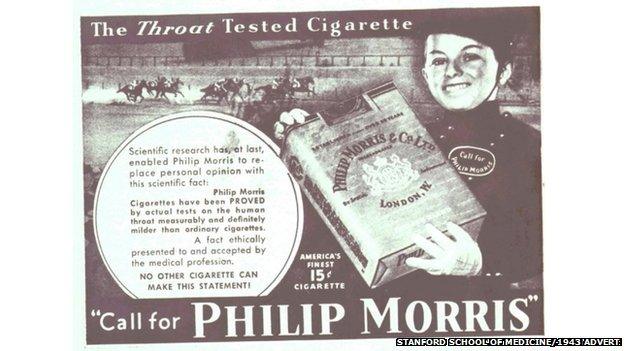
Doctors today say that removing branding from cigarette packaging would save thousands of lives.
But looking at cigarette advertising from the past, this hasn't always been the message from medical professionals.
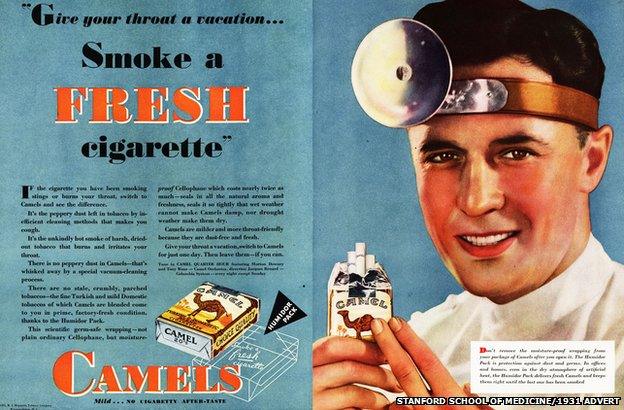
During the early 1900s doctors were used as smoking advocates and "scientific research" suggested the "benefits" of smoking.
Now it is well known that smoking can cause cancer, heart problems and other ill health.
Back then it was often promoted to doctors and their patients.
One brand, Philip Morris, used the slogan: "When smokers changed to Philip Morris every case of nose or throat - due to smoking - either cleared completely or definitely improved!"
Sex(ism) sells
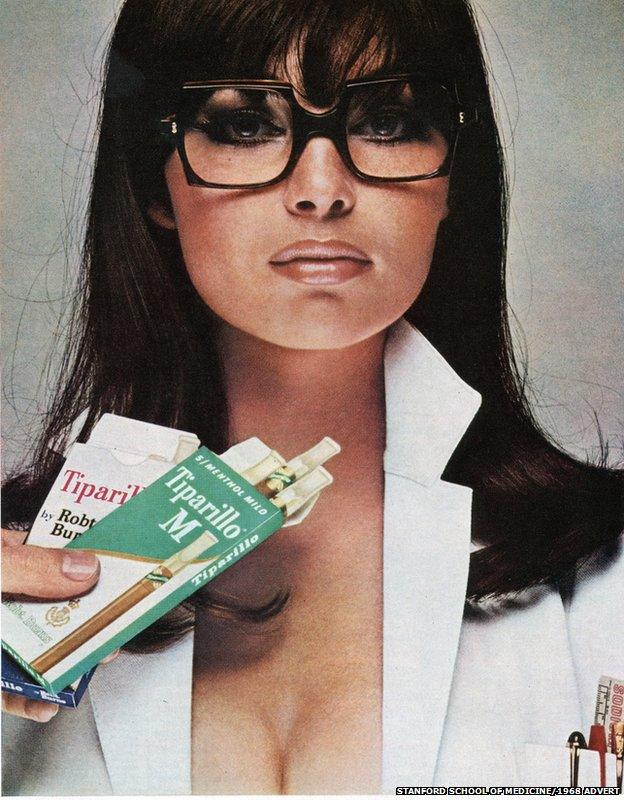
"Should a gentleman offer a Tiparillo to a lab technician?" asks this advertisement, before making jokes about the male viewer "staring at her pencils".
Many of the adverts from this era - the 1960s and 1970s - talk about male smokers being more attractive to women, using sex to sell the brand.
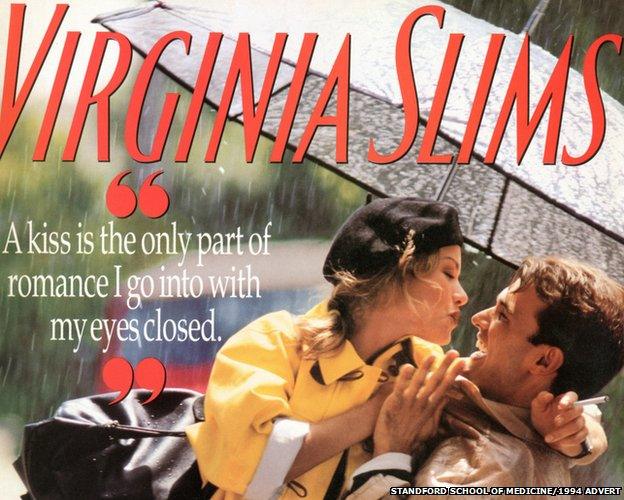
More recent advertisements, like this one from the mid-1990s, also played on the idea of cigarettes making you more attractive - but this brand was promoting itself to women.
Needless to say, none of the brands spoke about the ways smoking can affect your appearance - including stained teeth and a more wrinkled face.
Attracting teens
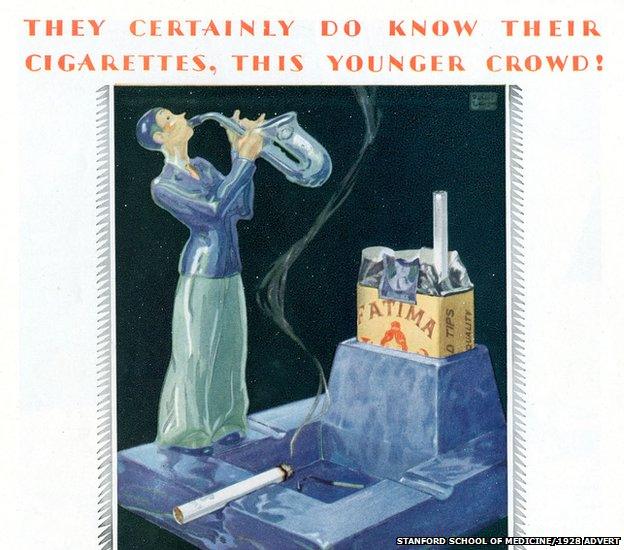
Advertisers have always known that most smokers start in their teens (current research suggests between the ages of 13 and 21).
Back in 1928 it was quite usual to target the "younger crowd".
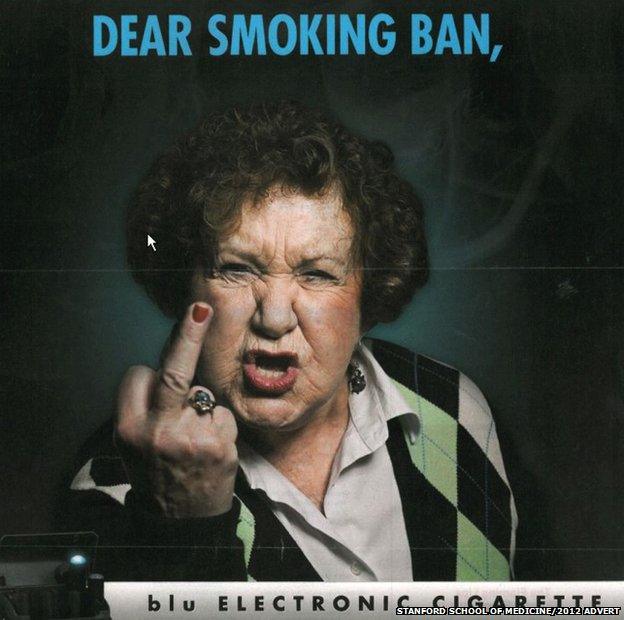
Last year saw the introduction of television advertising for e-cigarettes.
The Committee of Advertising Practice rules state that they cannot be "likely to appeal particularly to people under 18, especially by reflecting or being associated with youth culture".
A Public Health England report from May 2014 stated: "E-cigarettes are marketed as lifestyle products and are available in a wide range of flavours and in packaging that is likely to appeal to children and young people."
Family life

Babies and young children have previously featured heavily in cigarette advertising.
This brand claims to be the "cleanest" on the market.
Nowadays people are advised to keep children away from cigarettes.
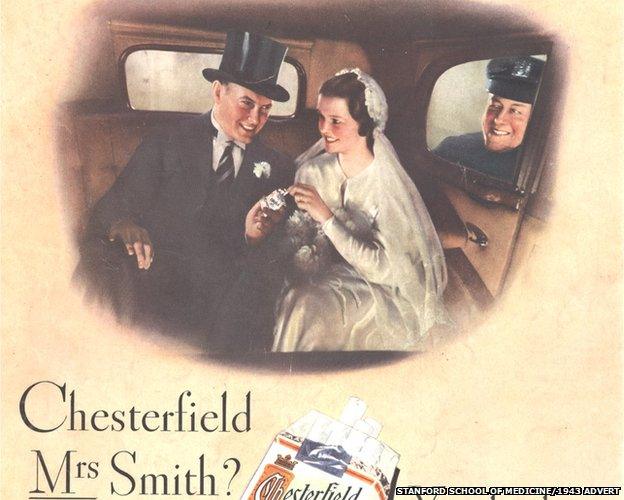
Many other promotional campaigns showed brides or people on their wedding day smoking.
The white wedding is linked to purity - an idea which many tobacco brands liked to associate themselves with.
Stanford School of Medicine, external has collected many of these images and slogans as part of its research into tobacco advertising.
"Between the late 1920s and the early 1950s, tobacco companies used deceptive and often patently false claims in an effort to reassure the public of the safety of their products," they say.
Follow @BBCNewsbeat, external on Twitter, BBCNewsbeat, external on Instagram and Radio1Newsbeat, external on YouTube